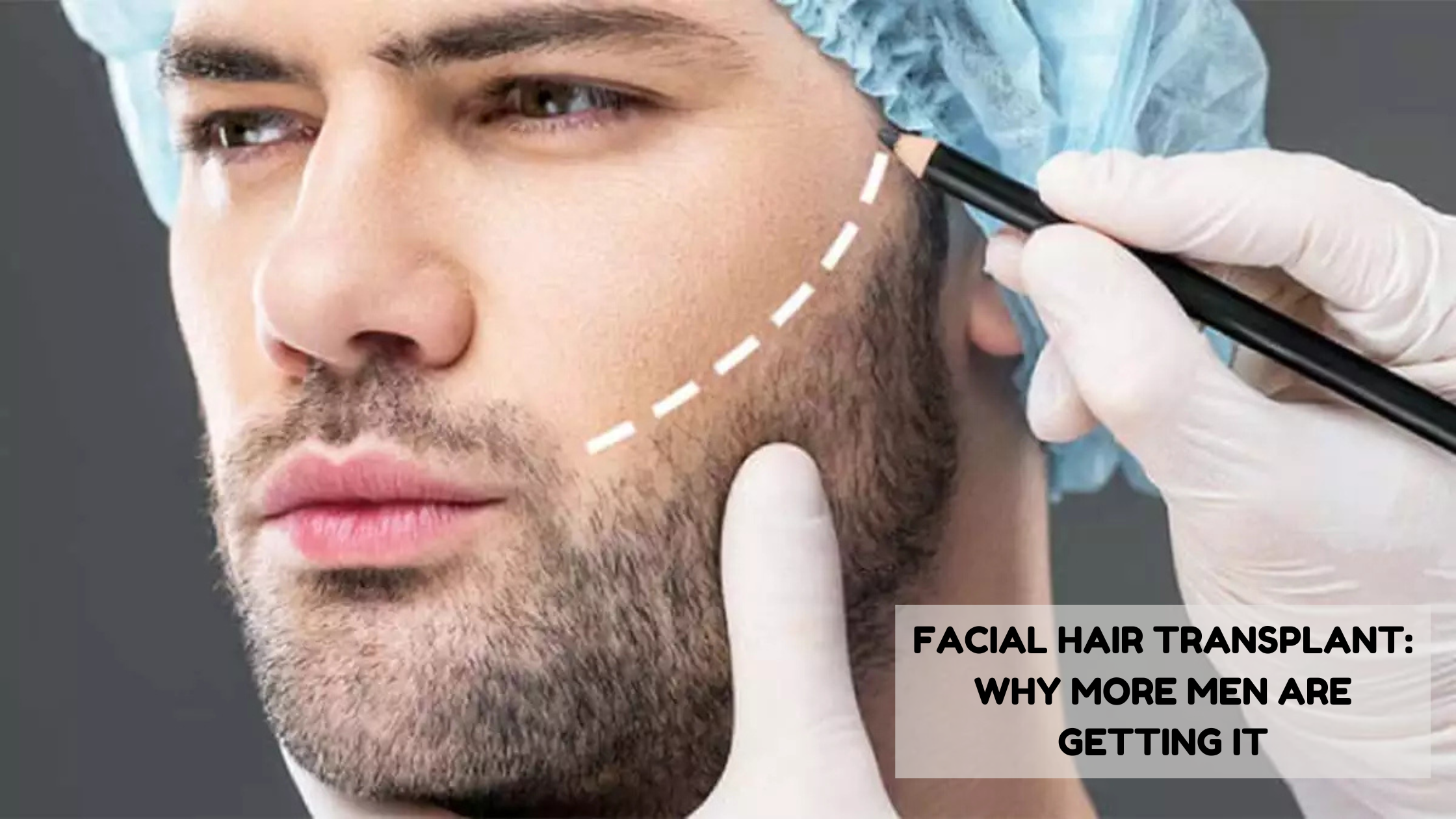In recent years, there has been a noticeable rise in the number of men opting for cosmetic procedures—and one trend leading the way is the facial hair transplant. Once considered a niche procedure, it is now becoming mainstream among men who want a fuller, more defined beard or mustache. Whether influenced by celebrities or personal grooming goals, more men are turning to this solution to enhance their facial appearance.
What Is a Facial Hair Transplant?
In a facial hair transplant, healthy hair follicles, often taken from the back of the head, are surgically moved to places on the face where hair is thin or nonexistent. The most commonly targeted areas include the beard, mustache, sideburns, and jawline. The goal is to create a natural-looking and permanent enhancement to facial hair growth.
Surgeons use methods like Follicular Unit Extraction (FUE) or Follicular Unit Transplantation (FUT) to complete the procedure. FUE is the more modern and less invasive option, making it highly popular in clinics across the U.S., including Palm Desert.
The Rise in Demand: Why More Men Are Choosing It
There are several reasons why the facial hair transplant has gained such popularity. One major factor is the influence of celebrities and social media influencers who showcase thick, well-groomed beards. These aesthetics have become associated with masculinity, confidence, and style, prompting more men to seek similar results.
Additionally, cultural shifts have normalized cosmetic procedures for men. In places like Palm Desert, where personal image and grooming are important, men feel more comfortable exploring cosmetic solutions without stigma. Whether it’s to correct a patchy beard or redefine the jawline, the desire for a better-groomed look is stronger than ever.
Ideal Candidates for Facial Hair Transplant
Not every man is the right candidate for a facial hair transplant, but many qualify. A candidate is considered ideal if they are generally healthy, have reasonable expectations, and have enough donor hair on their scalp. Some men struggle with patchy beards due to genetics, previous injuries, or conditions like alopecia. For them, a transplant offers a permanent solution.
In areas like Palm Desert, men with sun-damaged skin or facial scarring also consider the procedure as a way to cover imperfections and regain facial symmetry.
Advantages of Getting a Facial Hair Transplant
One of the biggest benefits of a facial hair transplant is that it delivers permanent results using your natural hair. This means there’s no need for topical creams, synthetic implants, or hair fibers. The procedure allows for complete customization—you can choose the density, shape, and coverage you want.
Moreover, recovery is relatively quick. Patients typically resume normal activities within a few days. Another often-overlooked benefit is the psychological boost. A fuller beard or mustache can greatly enhance one’s self-esteem and personal confidence.
How the Procedure Works
The process begins with a consultation where the surgeon evaluates your facial hair goals and examines the donor area. Hair follicles are meticulously extracted on the day of the treatment frequently one at a time in the case of FUE and then transplanted into the desired location on the face.
Depending on the number of grafts needed, the surgery can take several hours. Local anesthesia ensures minimal discomfort. In clinics across Palm Desert, the use of advanced equipment and skilled technicians results in very high success rates.
Common Concerns and Misconceptions
Many men worry that the facial hair transplant might be painful or leave visible scars. However, with modern techniques like FUE, the procedure is minimally invasive and virtually scar-free. Another myth is that transplanted facial hair won’t grow naturally. In fact, after the initial shedding phase, new hair grows just like normal facial hair—it can be shaved, trimmed, and styled.
Cost is another concern. While pricing varies depending on the clinic and number of grafts, locations like Palm Desert offer competitive rates without compromising quality. Financing options are also commonly available to make the procedure more accessible.
Before and After: What to Expect
Patients may have some redness and minor edema after the treatment, which goes away within a few days. The transplanted hair typically falls out in 2–3 weeks—a normal part of the process—before regrowth starts in about three months.
By the six-month mark, significant improvement can be seen, with full results visible after 9 to 12 months. Most men are thrilled with the transformation and often report increased satisfaction in both their appearance and social life.
Conclusion
The growing popularity of the facial hair transplant is no coincidence. Men today are more proactive about their grooming and appearance, and they now have the tools and technologies to achieve their desired look. Whether it’s to fix a patchy beard, restore lost hair due to scarring, or simply gain a more defined jawline, this procedure offers a safe, permanent solution.
In cities like Palm Desert, where grooming standards are high and advanced clinics are easily accessible, it’s no surprise that more men are embracing the benefits of facial hair transplants. If you’ve been contemplating a change, now might be the ideal moment to research how a facial hair transplant might help you get the appearance you’ve always wanted.


